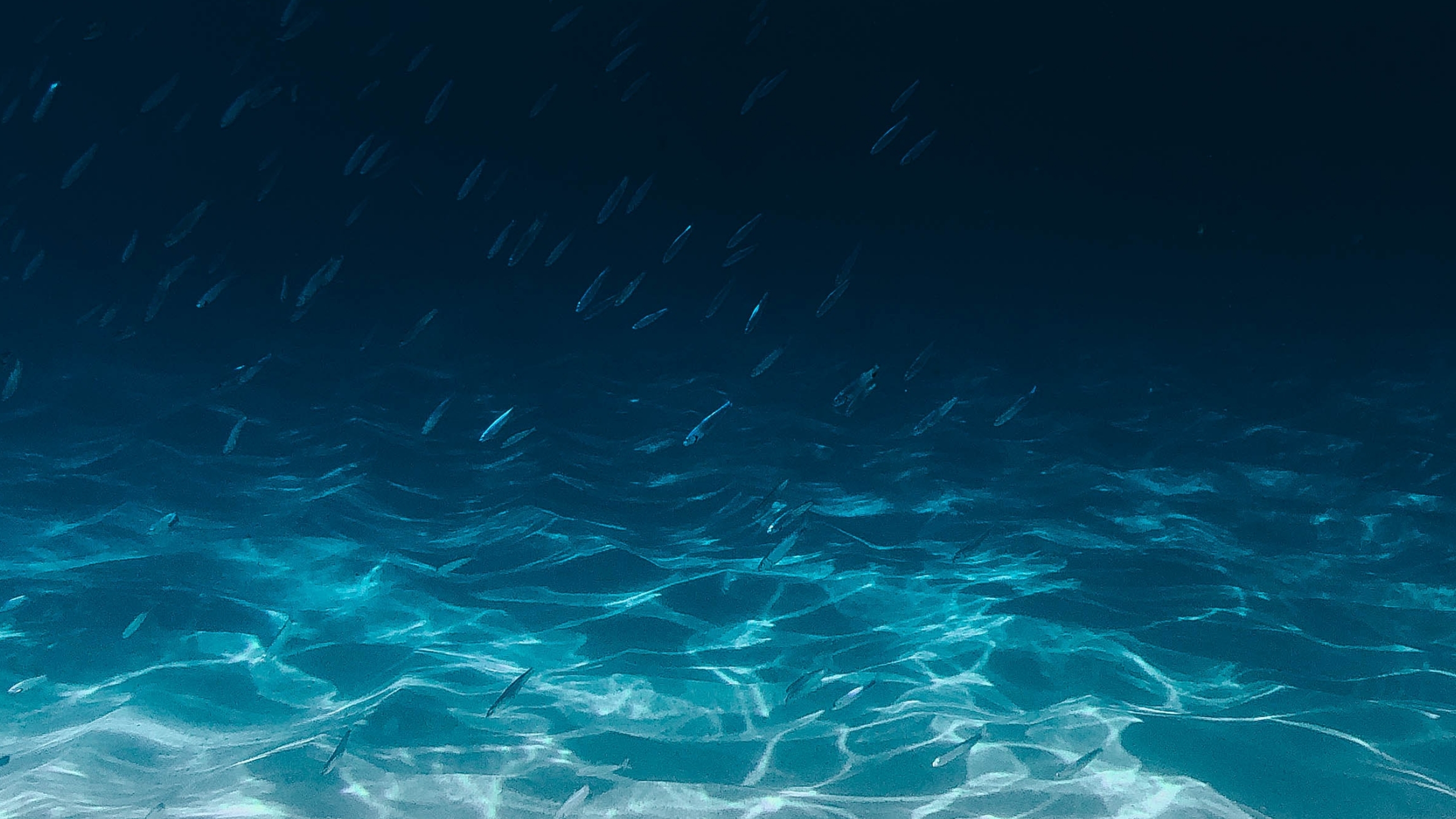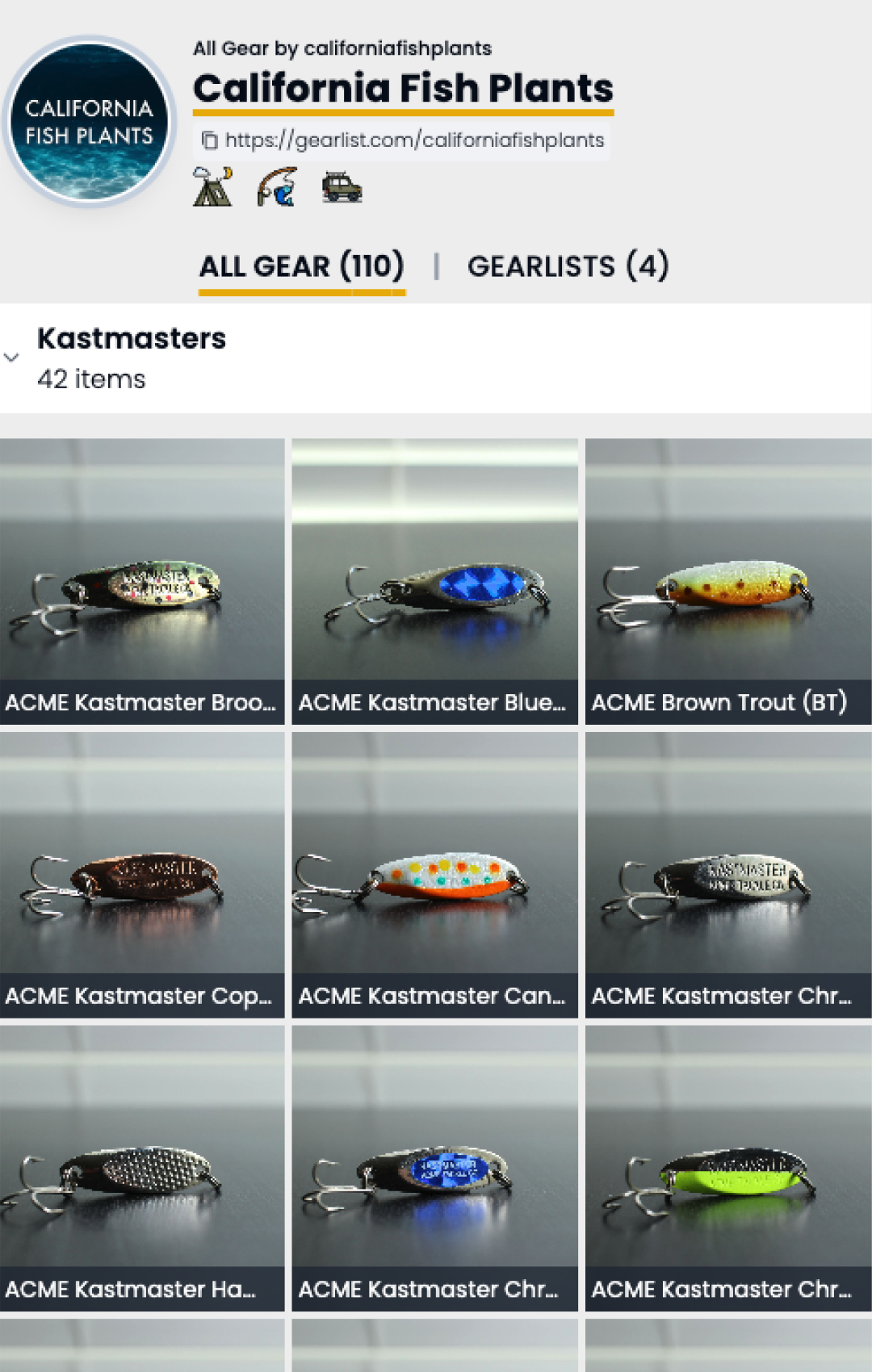Halsey Forebay, nestled in the foothills north of Auburn, offers anglers a tranquil retreat for a day of fishing adventures. As a lesser-known gem, this 3.5-mile-long reservoir on the North Fork of the American River may not be on everyone’s radar, but for those in the know, it promises a fair fishery with unique opportunities.
📈 Latest Fish Plants
Fish here often?
How To Read Fish Plant Graphs
To interpret fish plant graphs effectively, consider the following key elements:
- Blue Vertical Bars and Numbers:
- Representation: The blue vertical bars on the graph represent individual fish plants.
- Weight Measurement: The associated numbers indicate the total weight of the plants in pounds (lbs.) that occurred during a specific week.
- Significance: Monitoring these bars helps identify weeks with higher planting activity, aiding anglers in selecting optimal times for fishing near recent plantings.
- Orange Trend Line:
- Purpose: The orange trend line represents the moving average of all fish plant activities at the specified location.
- Indicator of Activity: A rising trend line suggests a consistent increase in planting activity over the designated period. This indicates the potential for more catch opportunities and signifies a growing fish population over the weeks.
- Interpreting the Moving Average:
- Upward Trend: A rising moving average implies an upward trajectory in planting activity, indicating an increasing number of fish being introduced into the area. This suggests a positive outlook for anglers, as it implies a larger and potentially more accessible fish population.
- Downward Trend (Not Specified): The description does not provide information on the interpretation of a decreasing trend in the moving average. It might be beneficial to include information on what a decreasing trend could signify in terms of fishing prospects.
- No Data Present:
- Possible Explanations: If no data is visible on the graph, it may indicate that the location had no fish plants in the last three months. Alternatively, the absence of data could be due to non-disclosure of fish plants for that location.
- Natural Population: Some fishing areas in California rely on the natural growth of fish populations, and graphs may not show plants if this is the case.
- Graph Disclaimer:
- Data Source: The graphs reflect a combination of publicly disclosed data and estimates. Some locations may disclose fish plants without specifying exact amounts.
- Not Universal: Not all fishing areas have fish plants, and the natural growth of fish populations plays a significant role in many California fishing locations.
Understanding these elements will empower anglers to make informed decisions about when and where to fish based on historical fish plant data.
Note: If no data is present in the graph above, this location may not have had any plants the last 3 months, or may not have publicly disclosed plants. Graphs reflect both publicly disclosed data and estimates, as some locations disclose plants, but not exact amount.
🗺️ Map & Fishing Location
Rainbow trout reign supreme in these waters, eagerly taking PowerBait, spinners, and small flies. While smallmouth bass provide an exciting fight, and largemouth bass, though fewer in number, can reach impressive sizes. Catfish, particularly channel catfish, pose a nighttime challenge, while striped bass make occasional appearances, especially during the warmer months. Each species presents its own set of challenges and rewards, making every fishing trip to Halsey Forebay a unique experience.
Fed by the Bear River Canal, Halsey Forebay is one of several small lakes in the area. However, what sets it apart is the regular stocking of trout by the Department of Fish and Game (DFG), ensuring ample opportunities for anglers to reel in good-sized catches. Timing is key here, as success often hinges on fishing shortly after a DFG trout stocking. Understanding the reservoir’s history and stocking patterns can greatly enhance an angler’s chances of success on the water.
For first-time anglers, navigating Halsey Forebay may seem daunting, but fear not! With our top 5 tips, you’ll be well-equipped to tackle this reservoir with confidence. Timing your visit just after a trout stocking, focusing on key fishing spots, and exploring nearby lakes for alternative angling opportunities are just a few strategies to consider. And don’t forget to check out our Gearlist for tailored gear recommendations to optimize your fishing experience at Halsey Forebay.
From optimizing your timing to targeting specific species and exploring unique fishing spots, there’s no shortage of strategies and tactics to employ at Halsey Forebay. Whether you’re a seasoned angler or a novice adventurer, this reservoir offers a diverse range of fishing opportunities to suit every skill level and preference. So pack your gear, grab your rod, and embark on an unforgettable fishing expedition to Halsey Forebay.
Types of Fish to Expect:
- Rainbow Trout: The predominant species, averaging 10-12 inches, readily taking PowerBait, spinners, and small flies.
- Smallmouth Bass: Less common than rainbow trout but providing an exciting fight. Crankbaits, spinnerbaits, and plastic worms are effective lures.
- Largemouth Bass: Present in smaller numbers but can reach impressive sizes. Crankbaits and spinnerbaits near the dam and rocky shorelines are worth a try.
- Catfish: Primarily channel catfish, offering a nighttime challenge. Use cut bait or stink baits for the best chance of success.
- Striped Bass: An occasional visitor, especially during spring and summer. Trolling with large baits near the dam is the best way to target them.
History:
Fed by the Bear River Canal, Halsey Forebay sits at an elevation of 1,800 feet and is one of several small lakes in the vicinity. Unlike its counterparts, Halsey Forebay is unique in that the Department of Fish and Game (DFG) regularly stocks it with trout, providing opportunities for good-sized catches, particularly in the days following a plant. However, the holdover bite between plants is limited, making timing crucial for anglers seeking success.
Top 5 Tips for First-Time Anglers:
- Time Your Visit: For the best chances of success, plan your fishing trip just after the DFG’s trout stocking. The days immediately following a plant offer optimal conditions.
- Focus on Key Spots: Target areas along the rail near the inlet and the shore directly across the lake from there for better fishing prospects.
- Explore Nearby Lakes: While Rock Creek Lake, Lake Arthur, Lake Theodore, and Siphon Lake are in proximity, Halsey Forebay is the only one stocked with trout. Lake Arthur is recommended for pan-sized cats and green-eared sunfish.
- Utilize Effective Lures: Experiment with PowerBait, spinners, crankbaits, and plastic worms for various species in the reservoir.
- Check Gearlist for Recommendations: Explore our Gearlist account for precise gear recommendations to enhance your fishing experience at Halsey Forebay.
Top 5 Strategies and Tactics:
- Optimize Your Timing: Adjust your fishing tactics based on the season and month. Spring and fall are generally peak seasons for rainbow, smallmouth, and largemouth bass.
- Night Fishing for Catfish: Channel catfish are more active during summer and fall nights. Try using cut bait or stink baits for a successful nighttime catch.
- Trolling for Striped Bass: Make the most of spring and summer by trolling with large baits near the dam for a chance to catch striped bass.
- Target Swift Currents: The area near the parking lot on the northeast side features rock walls and swift currents. Exercise caution while fishing in this challenging but rewarding location.
- Explore Specific Locations: From the dam area for trolling to the north and south shores for bass, each spot offers unique fishing opportunities.
Top 5 Recommendations for Fishing Gear:
- Trout Gear: Light to medium-weight spinning or baitcasting gear is suitable. Experiment with PowerBait, spinners, and small flies for rainbow trout.
- Bass Tackle: For smallmouth and largemouth bass, use crankbaits, spinnerbaits, and plastic worms with light to medium-weight spinning or baitcasting gear.
- Catfish Equipment: Sturdy gear is recommended for nighttime channel catfish fishing. Equip yourself with cut bait or stink baits for the best results.
- Striped Bass Setup: Utilize trolling setups with large baits near the dam for targeting occasional striped bass.
- Explore Our Gearlist: Visit our Gearlist account for precise recommendations on specific fishing gear to optimize your angling experience at Halsey Forebay.
Halsey Forebay, with its tranquil waters and diverse fishery, leaves a lasting impression on every angler who ventures to its shores. As the sun sets over the horizon and the day’s fishing adventures come to a close, there’s a sense of fulfillment that comes with knowing you’ve spent time in nature’s embrace. But beyond the thrill of the catch, Halsey Forebay offers a deeper connection to the natural world and a reminder of the importance of preserving these precious ecosystems for future generations.
Reflecting on the experiences shared and the memories made, it’s clear that Halsey Forebay holds a special place in the hearts of those who have had the privilege of fishing its waters. From the excitement of reeling in a rainbow trout to the peaceful solitude of casting a line from the shore, each moment spent at Halsey Forebay is a testament to the beauty of the outdoors and the joy of angling.
But Halsey Forebay is more than just a fishing destination—it’s a sanctuary of natural wonders, a place where the worries of everyday life fade away, and the simple pleasures of fishing take center stage. Whether you’re a seasoned angler or a novice adventurer, there’s something magical about spending a day on the water, surrounded by the beauty of the Sierra Nevada foothills.
As anglers prepare to depart from Halsey Forebay, they do so with a renewed appreciation for the natural world and a commitment to preserving these pristine wilderness areas for future generations to enjoy. Whether it’s practicing catch-and-release fishing to ensure the sustainability of fish populations or participating in conservation efforts to protect the habitats that make places like Halsey Forebay possible, there’s a sense of responsibility that comes with being stewards of the environment.
In closing, Halsey Forebay is more than just a reservoir—it’s a gateway to adventure, a haven for anglers, and a reminder of the beauty that surrounds us. So as we reflect on the memories made and the fish caught, let us also remember the importance of cherishing and protecting these natural treasures for generations to come. With its tranquil waters and diverse fishery, Halsey Forebay invites us to slow down, reconnect with nature, and savor the simple joys of fishing.



